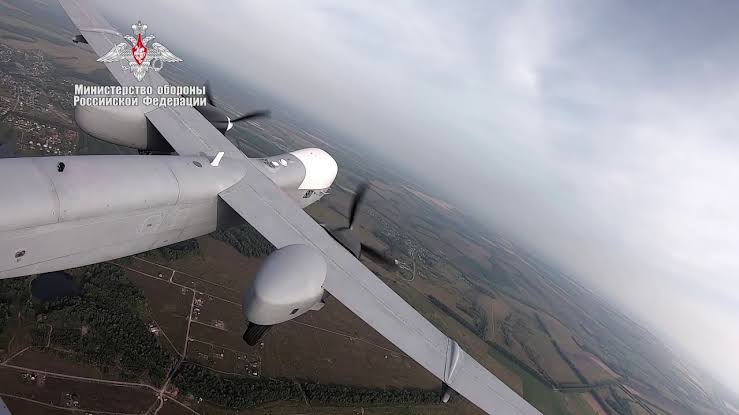Russia’s Ministry of Defense recently uploaded a video of the twin engine drone to YouTube. The drone, under development for several years, reportedly experienced cost overruns and was behind schedule for several years. The airplane is described as a spy plane but appears to have the ability to carry weapons.
Russia, despite its reputation for being a military giant has lagged behind the United States in the development of unmanned aerial vehicles. Until recently, Russia had no equivalent to American Reaper or Predator drones, medium altitude, long endurance (MALE) drones capable of loitering for a day or more over a target, conducting surveillance, then finally attacking the target with precision-guided weapons.
The new Altair/Altius-U drone appears ready to plug that hole. The drone, according to Russian state media, weighs six tons and is powered by two turboprop engines. According to open source analysis of satellite images, early prototypes were spotted with a length of 11 meters (roughly 36 feet)—about the same length as the MQ-9 Reaper. The prototypes however had a wingspan of 28 meters (91 feet), making the Altair/Altius-U considerably larger in wingspan than its American counterpart. However, it’s worth remembering that there have been several prototypes and the aircraft in the video might differ from any of them.
According to TASS, the drone flew for 32 minutes at altitudes of up to 800 meters (2,600 feet) and can reportedly fly for up to 24 hours at a time. The drone lacks any obvious sensor package, particularly a downward-facing electro-optical “eye” to help it stalk targets on the ground. Such a package usually includes high definition color and imaging infrared cameras in rotating turret, allowing the aircraft to fly circles above a target while keeping it under observation at all times.
The Altair was originally billed as a strike drone, then a reconnaissance-strike drone, and now is described as an intelligence/reconnaissance/surveillance drone. It’s a little unusual for a MALE drone to be unarmed, as being armed reduces the number and types of aircraft necessary for a mission that requires both observation and attack.
It’s possible that the drone, which reportedly encountered cost overruns and technical delays, ended up with a smaller payload capacity than originally envisioned. In 2015, a prototype was described as being powered by two Red A03 engines, imported from Germany, each providing 500 horsepower. That’s more horsepower than the single engine that powers the MQ-9 Reaper, but Altair is also a larger, heavier drone by more than half a ton.
One detail about the Altair clearly visible in the video: it has two hardpoints on its wings for carrying external stores. That could mean the ability to carry sensor pods, particularly synthetic aperture radar capable of “seeing” through bad weather to construct an image of objects on the ground. It could also hint that some kind of attack capability is still in the works for Altair, as such hardpoints could carry laser-guided bombs or missiles.
Russia’s new drone was not without controversy. In 2018, DefenseOne reported that Alexander Gomzin, director and chief designer of the Altair’s OKB Simonov Design Bureau, was arrested on charges of “abuse of authority, misappropriation of budgetary funds and fraud.”










